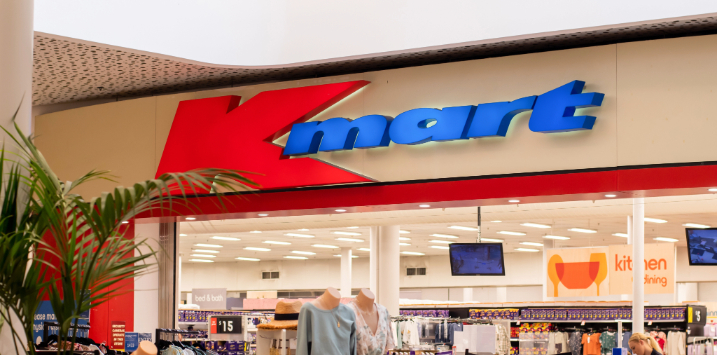
Kmart and chemicals (not Bunnings) powers Wesfarmers result
Wesfarmers (ASX:WES) delivered a solid set of half-year results for financial year 2025, exceeding market estimates at the earnings-before-tax (EBT) level and marginally at the top line. Strong performances by Kmart and WesCEF (chemicals, energy and fertilisers) drove the positive surprise, while Bunnings met expectations.
A closer look at the numbers
Wesfarmers generated total revenue of $23.49 billion in the first half of financial year 2025, which represents a 3.6 per cent increase compared to the prior corresponding period and is slightly above the market’s consensus of $23.46 billion. EBT rose by 4.6 per cent to $2.18 billion, surpassing the market’s estimate of $2.13 billion. Net profit after tax (NPAT) climbed by 2.9 per cent to $1.47 billion, in line with the market’s $1.45 billion estimate. Wesfarmers declared a dividend of 95 cents per share, which came in higher than market forecasts of 94 cents per share.
Business segments
Bunnings recorded EBT of $1.32 billion, reflecting a 3.1 per cent year-on-year increase, or 3.2 per cent when excluding property gains. This result was in line with the market’s expectations of $1.31 billion.
Officeworks reported EBT of $87 million, up 1.2 per cent year on year, below the market’s expectation of $92 million.
WesCEF, which comprises Wesfarmers’ chemicals, energy and fertilisers businesses, achieved an EBT of $177 million, a 2.9 per cent increase year-on-year that was significantly ahead of market forecasts of $143 million.
Industrial and safety registered an EBT of $45 million, down 8.2 per cent compared to the previous year, though this figure would have been $52 million if restructuring costs were excluded. This segment’s performance fell short of market consensus of $50 million, although management expects future benefits once restructuring is completed.
The health division reported EBT of $28 million, or $41 million when excluding restructuring costs and purchase price amortisation, which missed the market estimate of $37 million.
Meanwhile, Catch recorded a greater-than-consensus loss of $39 million at the EBT level. The business will be exited, and management expects wind-down costs of between $50 million and $60 million for Catch.
Wesfarmers generated an operating cash flow of $2.58 billion, while its cash realisation rate reached an impressive 108 per cent.
Net capital expenditure came in at $555 million, lower than the circa $660 million anticipated by some sell-side analysts, underscoring disciplined capital management over the period.
Guidance and trading update
During the first six weeks of the second half of financial year 2025, the Retail division performed well. Bunnings and Officeworks have sustained growth rates broadly in line with the first half (3.2 per cent and 4.7 per cent respectively). Kmart has already outpaced its first-half growth of two per cent, suggesting sustained demand heading into the latter part of the fiscal year. For WesCEF, management expects that pricing lags will provide less of a benefit to EBT in the second half of financial year 2025 compared to the first. Losses in the lithium division aren’t expected to vary much from the first half loss of $24 million.
Wesfarmers remains on track to begin its first lithium shipment by mid-calendar-year 2025, with forecast sales of between 150,000 and 170,000 tonnes of spodumene.
Management reiterated the company’s financial year 2025 outlook, which includes wind-down costs of $50 – $60 million for Catch, excluding operating losses, and ongoing OneDigital costs of $70 million. Net capital expenditure is expected to remain under consensus of $1.3 billion.
Final thoughts
Wesfarmers’ first-half financial year 2025 results highlight the strength of its diversified model, with Kmart and WesCEF delivering strong earnings and Bunnings meeting its targets. The health and industrial and safety divisions felt the impact of restructuring, although management expects these segments to benefit in the future once the restructuring phase concludes. Lithium remains in a loss-making stage at current prices, but the company’s focus on completing this strategic project by 2025 appears on track.
Retail sales have remained robust in the early part of the second half of financial year 2025, particularly in Kmart, suggesting potential upside. Overall, with disciplined capital allocation, steady retail demand, and well-timed investments and divestments, Wesfarmers continues to create value over the medium to long term.
The Montgomery Fund and Montgomery [Private] Fund owns shares in Wesfarmers. This article was prepared 20 February 2025 with the information we have today, and our view may change. It does not constitute formal advice or professional investment advice. If you wish to trade Wesfarmers, you should seek financial advice.